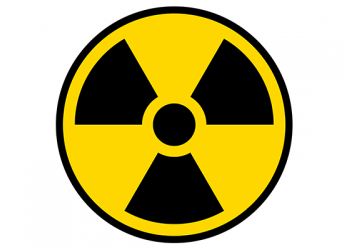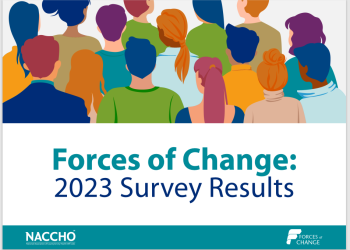 Human health is directly affected by natural disasters such as hurricanes, earthquakes, flooding, and heat; it is also indirectly affected through increased transmission and geographic expansion of diseases spread by insects, compromised air, water, and food quality. For example, bacterial counts in the water surrounding coastal communities tend to spike dramatically following heavy rainfall. Not only is this damaging to the environment, but the risk of foodborne illness from contaminated seafood rises exponentially. Moreover, climate change has indirect effects on mental health, nutrition and even occupation; anything from post-traumatic stress to loss of employment due to natural disasters can arise in the wake of a climate change event.
Human health is directly affected by natural disasters such as hurricanes, earthquakes, flooding, and heat; it is also indirectly affected through increased transmission and geographic expansion of diseases spread by insects, compromised air, water, and food quality. For example, bacterial counts in the water surrounding coastal communities tend to spike dramatically following heavy rainfall. Not only is this damaging to the environment, but the risk of foodborne illness from contaminated seafood rises exponentially. Moreover, climate change has indirect effects on mental health, nutrition and even occupation; anything from post-traumatic stress to loss of employment due to natural disasters can arise in the wake of a climate change event.
Observed and projected changes are explored comprehensively in the federal government’s Third National Climate Assessment (NCA). The NCA is a guiding document. NACCHO, the U.S. Department of Health and Human Services (HHS), and the National Oceanic and Atmospheric Administration (NOAA) are working to develop tools and information to help the public health sector navigate the impacts of climate change.
Climate is global yet the effects are local. The micro-scale of such effects prompt the pragmatic need to look at how communities (and priority groups, like the elderly or children) respond to issues raised in the NCA, which are often considered too small in scale to be covered by awareness media or health news sources. However, this doesn’t take away from their importance. Many groups within the general public are very sensitive to these climate change effects. Young children, people with disabilities, the elderly, and those of low socioeconomic status for instance, may have certain necessities or conditions that make them more vulnerable to the following weather-related events.
Temperature Extremes
Extreme heat can directly cause adverse health conditions, exacerbate chronic diseases, and lead to increased hospital admissions for cardiovascular, renal, and respiratory disorders. Babies and young children; seniors and individuals living with chronic diseases such as asthma or heart disease; healthy adults who exercise or work outdoors; and people without access to medical care are at an increased risk of experiencing complications during heat waves. During the last 50 years, heat waves have been documented as being more intense [1], and will continue in this trajectory as the climate changes. According to the Union of Concerned Scientists, the number of hot and humid days during the summer months is projected to increase by up to 10 days in some Midwestern cities [2]. In a recent study assessing heat wave and climate change preparedness in the Midwest, assisted living centers, nursing homes, and long-term care facilities were described by public health practitioners in two states as being deficient in their preparedness planning for heat waves and other emergencies [3]. As public health practitioners in the study described, two nursing homes in their communities were without electricity, and even worse, without a generator during an intense summer heat wave and had to rely on the state health department for assistance [3].
Changes in Precipitation
The Southwestern states and California have been in a persistent drought for the past 15 years, which has subsequently affected crops, livestock, and water-use policies. Elsewhere, flooding has had a heavy impact; a deluge of precipitation swamped New York City subways, Detroit highways, and other locations in the mid-Atlantic region. Preparedness for flooding depends on the rapidness of on-coming waters. NOAA’s Storm Prediction Center provides real-time weather information that can be helpful in assessing flood risks. NOAA’s seasonal outlooks (2 weeks to 12 months) can also provide a baseline for assessing overall flood-risk. Take special note of stationary fronts in the local forecast. These systems, as their name denotes, stay in one location for a long period of time and can unleash a lot of moisture at once. Everyone is at risk in these situations, so it’s critical to know about flooding potentials and to be prepared. The time to respond can often be shorter than people might think.
Air Quality
According to the NCA, air quality will likely degrade as climate change leads to increased ground-level ozone and/or particulate matter. Ground-level ozone (a key component of smog) is associated with health problems such as diminished lung function, increased hospital admissions and emergency room visits for asthma, and increased premature deaths. Children and the elderly are particularly vulnerable. Children breathe more rapidly and inhale more air per breath than adults, plus they often spend more time outside, and thereby increase their outdoor air exposure. The elderly tend to have pre-existing conditions that weaken lung function. The Environmental Protection Agency (EPA) has the primary function of monitoring air quality for policy considerations and NOAA measures air quality conditions and provides guidance on ozone, smoke and dust. Air quality data are available through an EPA and NOAA partnership. NOAA air quality predictions can be found at airquality.weather.gov.
Vector-Borne Disease Incidence
Vectors (e.g., rodents or insects) live where they feel comfortable and can avoid being the primary meal in the animal food chain. The NCA states that vector movement is affected by climate change, land use, and pest control. Some common examples of vector-borne diseases (VBD) in the United States currently include Lyme disease, Dengue fever, Chikungunya virus, West Nile virus, Rocky Mountain spotted fever, plague, and tularemia. HHS/National Institute of Health, the Centers for Disease Control and Prevention (CDC), National Aeronautics and Space Administration (NASA), and NOAA are working together to better understand how to use weather and climate data to predict how vectors (and their parasites) respond to climate change. These investigations will hopefully lead to a way for forecasting vector movement in the future.
Water-Borne Disease Incidence
The combination of pathogens and warmer water temperatures can lead to the proliferation of bacteria, which can contaminate water and food and cause diarrheal disease. Local health departments (LHDs) need to work in partnership with others to truly identify the potential risks. LHDs in coastal or gulf regions can obtain water temperature data from NOAA or NASA, which use satellites or sensors to measure temperature. LHDs near smaller water bodies such as lakes and rivers may require working with the local water or park service for information. All individuals are at risk of water-borne diseases (WBD), yet those with weak immune systems are particularly vulnerable.
Awareness Efforts and Resources
These issues represent situations where preparedness and response are not satisfied by a single policy. The needs of vulnerable groups require local investigation and status evaluation in order to tailor the efforts of LHDs to be more effective. To do this successfully, a department has to first examine the risks posed to its community by climate change. Different effects will be dominant in different areas due to constraints posed to the aforementioned pathways. It is important for LHDs to include vulnerable populations in all planning in activities. LHDs should form partnerships with key stakeholders in the community who deal directly with vulnerable populations. Lastly, it is important for LHDs to raise awareness where appropriate to educate lawmakers and the public alike about the health impacts of climate change and the need for whole community emergency planning.
NOAA, which carries the mission of environmental predictions, and NACCHO are taking strides to raise awareness about the risks of climate change among key stakeholders. Numerous resources focused on climate change and vulnerable populations include the following:
- Weather Ready Nation Ambassador Initiative (WRN), is a NOAA initiative that invites organizations such as city and county health departments to have a 2-way communication channel with the agency. Through WRN, NOAA provides a portal that makes it easier for organizations to reach a person at the agency to obtain information (as it can be confusing determining where to go from the outside). Its core mission is about building readiness, responsiveness, and resilience. Signing up is easy (click here). NOAA meteorologist, Wendy Marie Thomas, says that “WRN is proving to be a positive game-changer in how the agency engages with non-traditional partners, such as those in the public health sector.”
- NACCHO Climate Change Program
- NACCHO Report on Climate Change Preparedness at the Local Level
- NACCHO Climate Change and Public Health Online Course
- NACCHO Climate Change Toolkit
- Long Term Planning for Climate Change: What Local Public Health Should Consider Moving Forward
- Integrating Extreme Weather Events into Preparedness Planning
- NACCHO Health and Disability Program
- Strategies for Successfully Including People with Disabilities in Health Department Programs, Plans, and Services
- New Legal Precedent for Inclusive Planning, Preparedness, and Response
- NACCHO Health and Disability Toolkit
- Directory of Community-Based Organizations Serving People with Disabilities
NACCHO would like to extend its thanks to the contributors to this article: Wendy Marie Thomas, DOC/NOAA/NWS; Alicia Wodika, Truman State University
- Hayhoe, K., Sheridan, S., Kalkstein, L., & Green, S. (2010). Climate change, heat waves, and mortality projections for Chicago. Journal of Great Lakes Research, 36, 65-73.
- Union of Concerned Scientists. (2012). Heat in the heartland: 60 years of warming in the Midwest. Retrieved from: www.ucsusa.org/heatintheheartland.
- Wodika, A. B. (2013). Prioritizing preparedness: Extreme heat and climate change preparation of Midwestern health departments (Doctoral dissertation). Retrieved from ProQuest (3604401).







